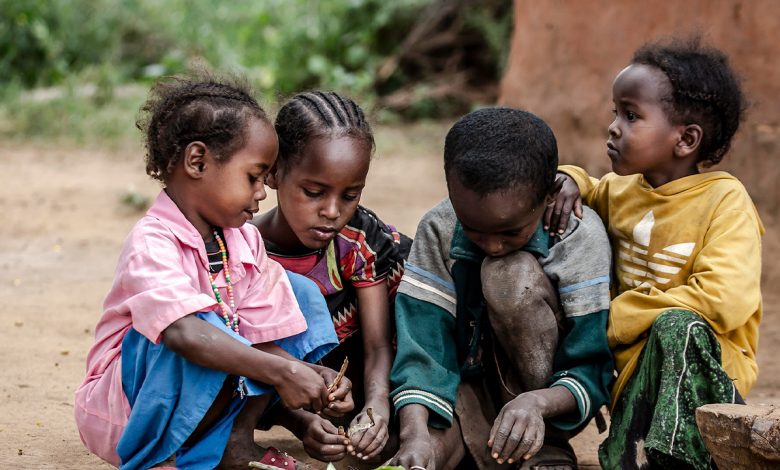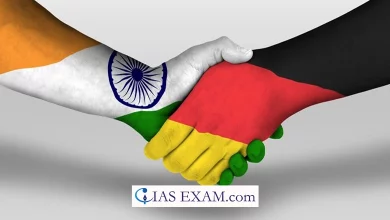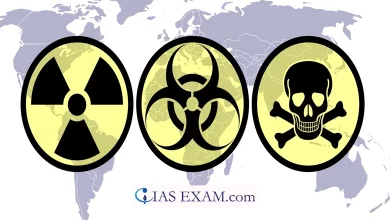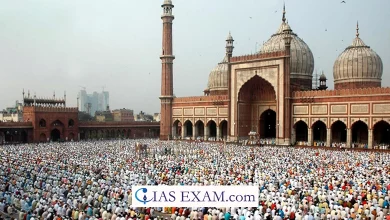
Context- Recently the World Health Organization (WHO) in its press brief has stated that acute malnutrition is risking 30 million children’s lives.
Key Highlights
Global state of Malnutrition:
- As per the data given by WHO, Currently, more than 30 million children in the 15 worst-affected countries suffer from wasting — or acute malnutrition.
- 8 million of these children are severely wasted as the deadliest form of undernutrition.
Causes:
- Conflict, climate shocks, the ongoing impacts of COVID-19 and rising living costs are leaving increasing numbers of children acutely malnourished are the main causes of this.
- At the same time, critical health, nutrition and other life-saving services are becoming less accessible.
Impacts:
- The global food crisis is a health crisis, and a vicious cycle and further malnutrition leads to disease, and disease leads to malnutrition.
- Acute malnutrition is a major threat to children’s lives and their long-term health and development and the impacts of which are felt by individuals, their communities and their countries, the WHO added.
Global Action Plan on Child Wasting
Action Plan:
- In response to the WHO’s report, five UN agencies subsuming WHO are calling for accelerated growth on the Global Action Plan on Child Wasting.
Agencies:
- These agencies are
- Food and Agriculture Organization (FAO),
- UN Refugee Agency (UNHCR),
- United Nations Children’s Fund (UNICEF),
- World Food Programme (WFP) and
- World Health Organization (WHO).
Aim:
- The action plan particularly aims to prevent, detect and treat acute malnutrition among children in the worst-affected countries such as Afghanistan, Burkina Faso, Chad, the Democratic Republic of the Congo, Ethiopia, Haiti, Kenya, Madagascar, Mali, the Niger, Nigeria, Somalia, South Sudan, Sudan and Yemen.
Need of support, action & investment:
- The agencies have called for decisive and timely action in order to prevent this crisis from becoming a tragedy for the world’s most vulnerable children.
- All agencies urged greater investment in support of a coordinated UN response which will meet the unprecedented needs of this growing crisis before it is too late.
Malnutrition
- It means deficiencies, excesses or imbalances in a person’s intake of energy and/or nutrients.
- It is a chronic issue and a longstanding challenge for the public administration of India.
- The term malnutrition addresses 3 broad groups of conditions i.e.
- Undernutrition:
- It includes wasting i.e. low weight-for-height, stunting i.e. low height-for-age and underweight i.e. low weight-for-age
- Together, the stunted and wasted children are considered to be underweight, which indicates a lack of proper nutritional intake and inadequate care post-childbirth.
- Micronutrient-related malnutrition:
- It includes micronutrient deficiencies i.e. a lack of important vitamins and minerals or micronutrient excess; and
- Overweight:
- It includes obesity and diet-related noncommunicable diseases such as heart disease, stroke, diabetes and some cancers.
- Undernutrition:
Government initiatives to address Malnutrition
-
- Poshan Abhiyan:
- It is a multi-ministerial convergence mission with a vision to ensure the attainment of malnutrition free India by 2022.
- The Ministry of Women and Child Development (MWCD) is the implementing body of POSHAN Abhiyaan.
- Prime Minister’s Overarching Scheme for Holistic Nutrition (POSHAN) 2.0 scheme includes
- The Integrated Child Development Services (ICDS) scheme, which seeks to work with adolescent girls, pregnant women, nursing mothers and children below three.
- Poshan Abhiyan:
- Integrated Child Development Services (ICDS):
-
-
- It represents one of the world’s largest and unique schemes for early childhood care and development.
- The beneficiaries under the programme are children in the age group of 0-6 years, pregnant women and lactating mothers
- The Ministry of Women and Child Development acts as the implementing agency.
-
- Mid-Day Meal Scheme:
-
-
- The Scheme is a school meal programme in India designed to better the nutritional standing of school-age children
- It covers all school students studying in Classes 1 to 8 of government schools, government-aided schools, special training centres, as well as madrasas supported under Samagra Shiksha Abhiyan.
-
- National Food Security Mission:
-
-
- It was launched in 2007-08 by the Ministry of Agriculture and Farmers’ Welfare and it is a Centrally Sponsored Scheme.
- It focuses on the sustainable growth in the production of targeted crops through area expansion and productivity enhancement.
-
- National Nutrition Mission:
-
- It is the government’s flagship programme to improve nutritional outcomes for children, pregnant women and lactating mothers.
- Aim:
- To reduce stunting and wasting by 2 percent per year i.e. total 6 percent until 2022 among children and anemia by 3 percent per year (total 9 per cent until 2022) among children, adolescent girls and pregnant women and lactating mothers.
- The Ministry of Women and Child Development is the nodal ministry for implementation.
Way ahead
- It is being speculated that such a situation is likely to deteriorate even further in 2023.
- Urgent support is a must need now in the hardest-hit countries to protect children’s lives and health, including ensuring critical access to healthy foods and nutrition services, especially for women and children.
- Improving the efficiency and effectiveness of existing nutrition investments can also increase the impact of available resources on malnutrition.
- Policy initiatives are urgently required to transform food systems, increase intake of health-promoting foods, and reduce animal-based foods, to ensure diets are healthy and sustainable for people and the planet.





.png)



